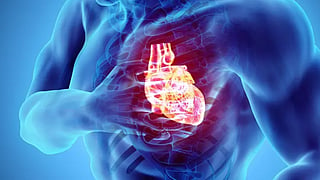
Cardiac arrest is a serious medical emergency that occurs when the heart suddenly stops beating. As one of the body's most vital organs, the heart plays a crucial role in pumping oxygenated blood to all parts of the body. When it ceases to function, the lack of blood flow can lead to death within minutes if immediate treatment is not provided.
The following symptoms may indicate the onset of cardiac arrest:
Sudden collapse
Loss of consciousness
Difficulty breathing or no breathing at all
Irregular or rapid heart palpitations
Dizziness or light-headedness
Chest pain
Nausea and vomiting
Recognizing these warning signs early can be life-saving, as every second counts in a cardiac emergency.
Most cardiac arrests are caused by a malfunction in the heart's electrical system. This malfunction can lead to abnormal heart rhythms, known as arrhythmias. The two most dangerous types of arrhythmias are:
Ventricular fibrillation (VF): A chaotic, irregular heartbeat that prevents the heart from pumping blood effectively.
Ventricular tachycardia (VT): A very fast heart rhythm that may also impair the heart's ability to pump blood.
In some cases, cardiac arrest may be caused by bradycardia, an abnormally slow heart rate. These irregular rhythms disrupt the heart’s ability to circulate blood properly, posing an immediate threat to life.
Immediate treatment for cardiac arrest typically includes:
Cardiopulmonary resuscitation (CPR): Helps maintain vital blood flow to the heart and brain until normal heart function is restored.
Defibrillation: A medical device called an automated external defibrillator (AED) can deliver an electric shock to the heart to restore a normal rhythm.
Advanced medical care: Emergency services may provide medications, advanced airway management, and hospital treatment to stabilize the patient.